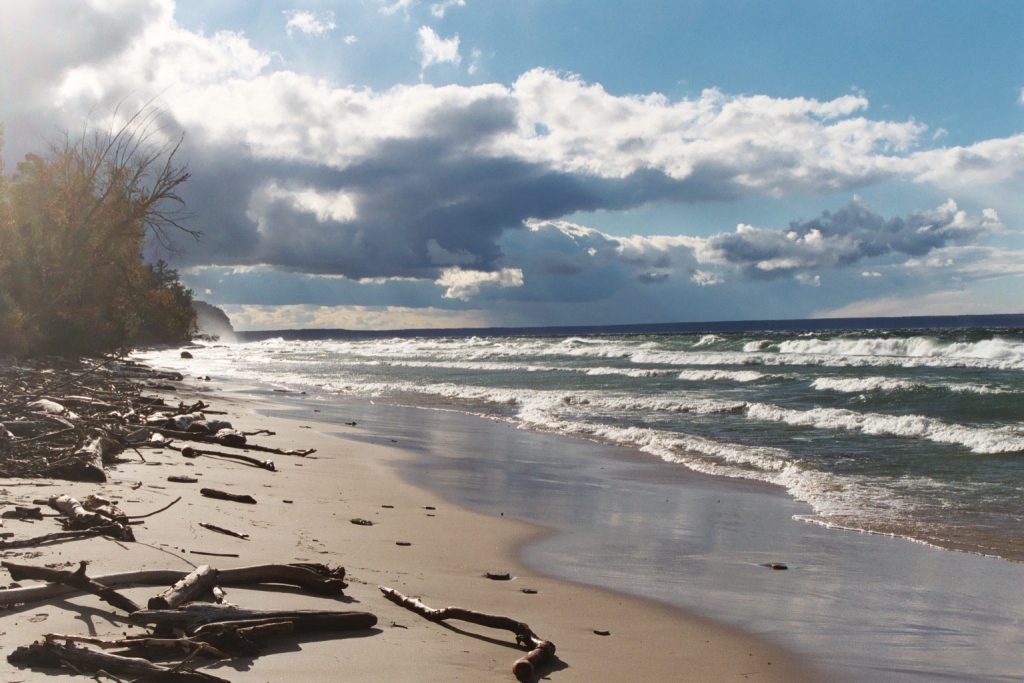Core Question
Our research contributes to answering a core question in ecology: how do within- and between-species interactions shape microbial community diversity, composition, and functioning?
Research themes and funding support
We develop our core research question in two main research themes.
(1) Work on the first theme focuses on how invasive species alter within- and between-species planktonic interactions in freshwater lakes, with an emphasis on the Great Lakes. Anthropogenic species invasion is one of the primary forces altering the diversity and functioning of life in Earth’s aquatic systems. Among the many invasive species found in lake systems, zebra and quagga mussels have often mediated the most radical changes to phytoplankton community structure. In turn these changes have led to large environmental issues from harmful algal blooms to collapsing fisheries. Yet, defining the impact of invasive mussels on bacterioplankton and what role altered bacterial communities play in these environmental issues has remained mostly elusive, in part due to methodological limitations to identify bacterial diversity and functioning during the introduction and rapid expansion of these mussels in the US in the ‘80s and ‘90s. This work has been funded by NOAA, the DOE Joint Genome Institute Community Sequencing Program, and the Erb Family Foundation through the University of Michigan Water Center.
Study system: We focus on inland lakes in Southern Michigan, Lake Michigan, Lake Erie, and Saginaw Bay in Lake Huron and for field experiments, we work at the UM Biological Station.
Lab researchers: Nikesh Dahal, Sara Jackrel, Jacob Evans
(2) A more recent theme addresses the question of how bacteria can alter the strength and type (facilitation, neutral, or competition) of interactions between eukaryotic species. Our approach offers one of the first opportunities to formally quantify the extent to which bacteria associated with eukaryotic hosts (also called microbiomes) control eukaryotic diversity and community composition. This work has been performed in large part by outstanding contributions from undergraduate researchers, and has been funded in part through support from NSF and NOAA. We work in collaboration with Cardinale lab (SEAS, UM) on this project.
Study system: We mostly perfom laboratory experiments, but also make us of the experimental ponds at the E.S. George Reserve near the UM campus and field sampling in Lake Erie
Lab researchers: Dylan Baker, Jacob Evans, James Lauer, Jinny Yang, Kathryn Schmidt, Sara Jackrel
In addition to these two main research themes, we have collaborated with colleagues in more applied fields. This includes studies focused on (1) applying ecological theory to improve biofuel production by freshwater algae (Jackrel et al., 2018; selected as an Editor’s pick), (2) understanding the microbial populations dynamics in engineered water systems (Props et al., 2019; Wu et al., 2017), and (3) outbreaks of bacterially-caused avian botulism in the Great Lakes, which directly connects to the invasion of zebra and quagga mussels (work funded by the National Parks Service in collaboration with Harvey Bootsma (University of Wisconsin, Milwaukee).
Research approach
To address our questions, it is necessary to study the continuum from genes to phenotype to community composition to community interactions and eventually to functioning. We do this by applying in situ surveys, and laboratory and field experiments, using both culturing-based approaches as well as state-of-the-art molecular and bioinformatic methods. As progress in our understanding of microbial systems continues to depend on the development of methods that can more deeply probe the extraordinarily diverse microbial world, we are contributing to both the critical evaluation of current methods (McCarthy et al., 2015; Lennon and Denef, 2015; Berry et al., 2017a; Denef et al., 2016; Denef, 2018), as well as the development of novel methods to tackle our questions (Props et al., 2018). These critical evaluations include reflections on the use of concepts developed in plant and animal ecology, e.g. “what is a microbial population?” (Denef, 2018) and “does sequence information correctly delineate ecotypes?” (Berry et al., 2017a). Proper adaptation of these concepts in the microbial work is critical as we further integrate microbial life into ecological theory.
Why UM EEB
For much of the history of ecology, microbial life too small to morphologically identify has been excluded. However, methodological advances, primarily based on sequencing technology, have opened our eyes to this unseen majority of life so that we can now broaden ecological theory to include the microbial world. Our work at the interface between microbiology and ecology benefits form being in a great EEB department, while also being connected to the campus-wide cross-disciplinary program in microbial ecology. Interactions with microbial ecology groups across campus allow us to study fundamental concepts regarding the interrelation of evolution and ecology that enhance our understanding of the microbial contributions to ecosystem functioning. New insights will contribute to tackling current societal challenges related to climate change, bio-energy, and the role of microbes in plant, animal, and human health.

